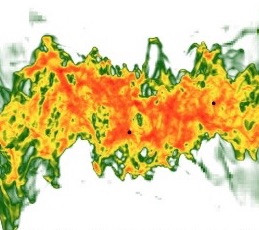Both observational and theoretical research over the past decade has demonstrated that the probability distribution function (PDF) of the gas density in turbulent molecular clouds is a key ingredient for understanding star formation. It has recently been argued that the PDF of molecular clouds is a pure power-law distribution. It has been claimed that the log-normal part is ruled out when using only the part of the PDF up/down to which it is complete, that is where the column density contours are still closed. By using the results from high-resolution magnetohydrodynamical simulations of molecular cloud formation and evolution, we find that the column density PDF is indeed composed of a log-normal and, if including self-gravity, a power-law part. We show that insufficient sampling of a molecular cloud results in closed contours that cut-off the log-normal part. In contrast, systematically increasing the field of view and sampling the entire cloud yields a completeness limit at the lower column densities, which also recovers the log-normal part. This demonstrates that the field of view must be sufficiently large for the PDF to be complete down to its log-normal part, which has important implications for predictions of star formation activity based on the PDF.
Körtgen, Bastian; Federrath, Christoph; Banerjee, Robi
2019, Monthly Notices of the Royal Astronomical Society, 482, 5233
http://adsabs.harvard.edu/abs/2019MNRAS.482.5233K
